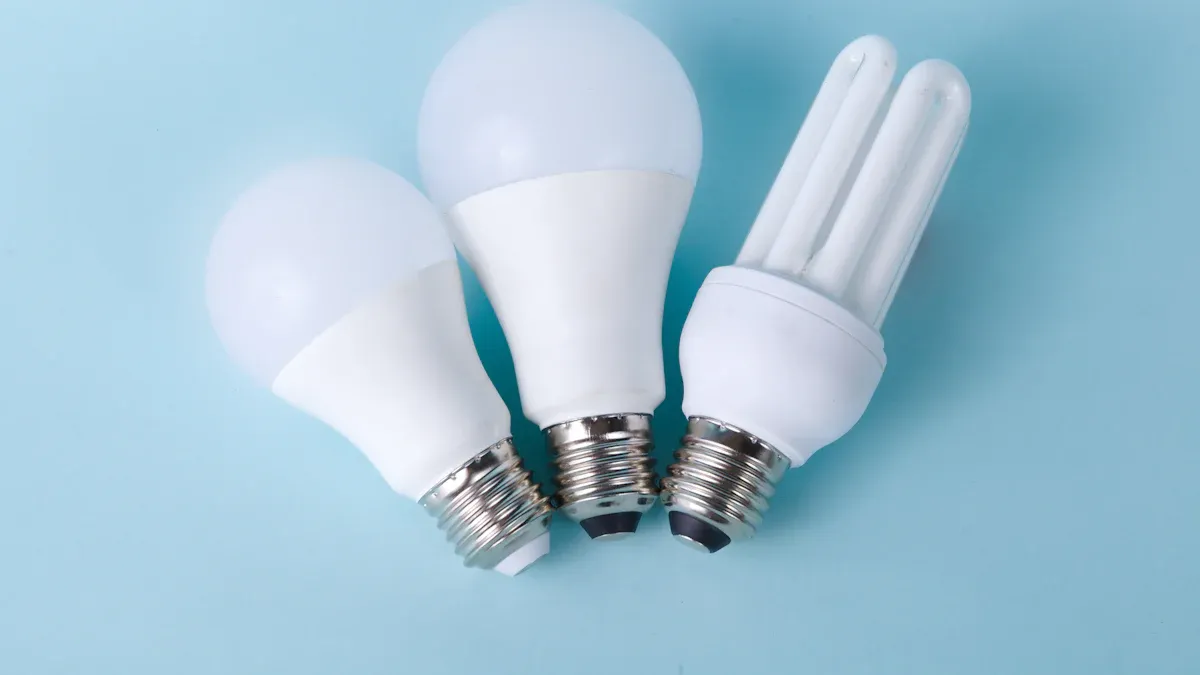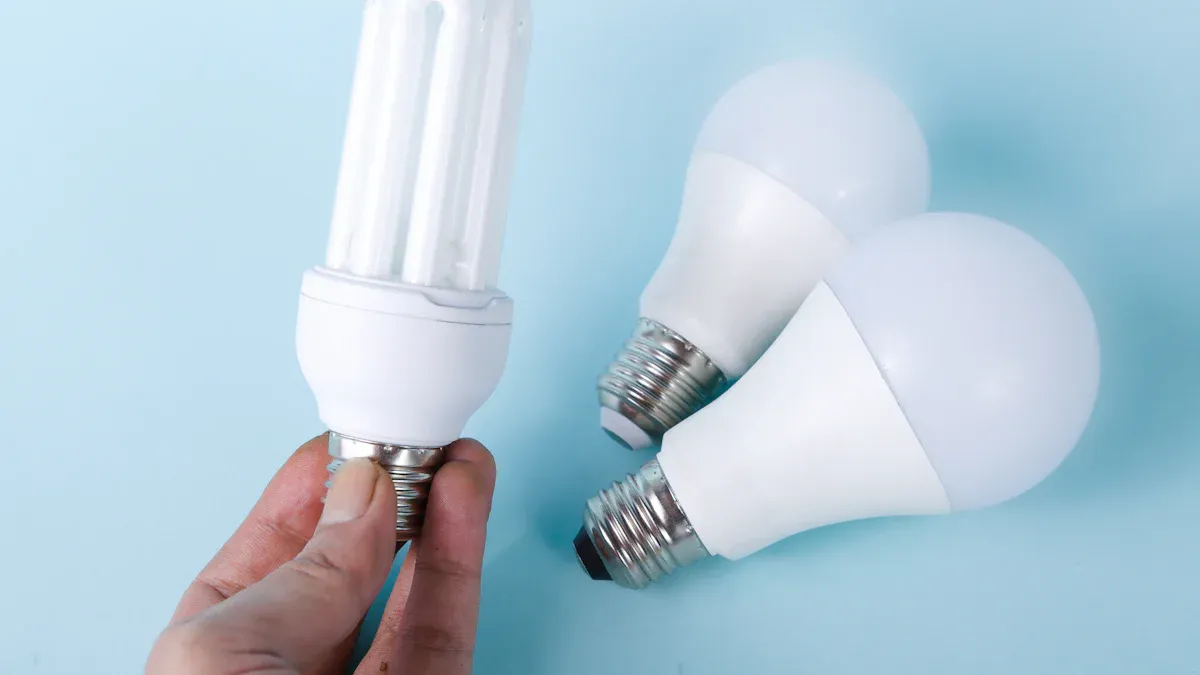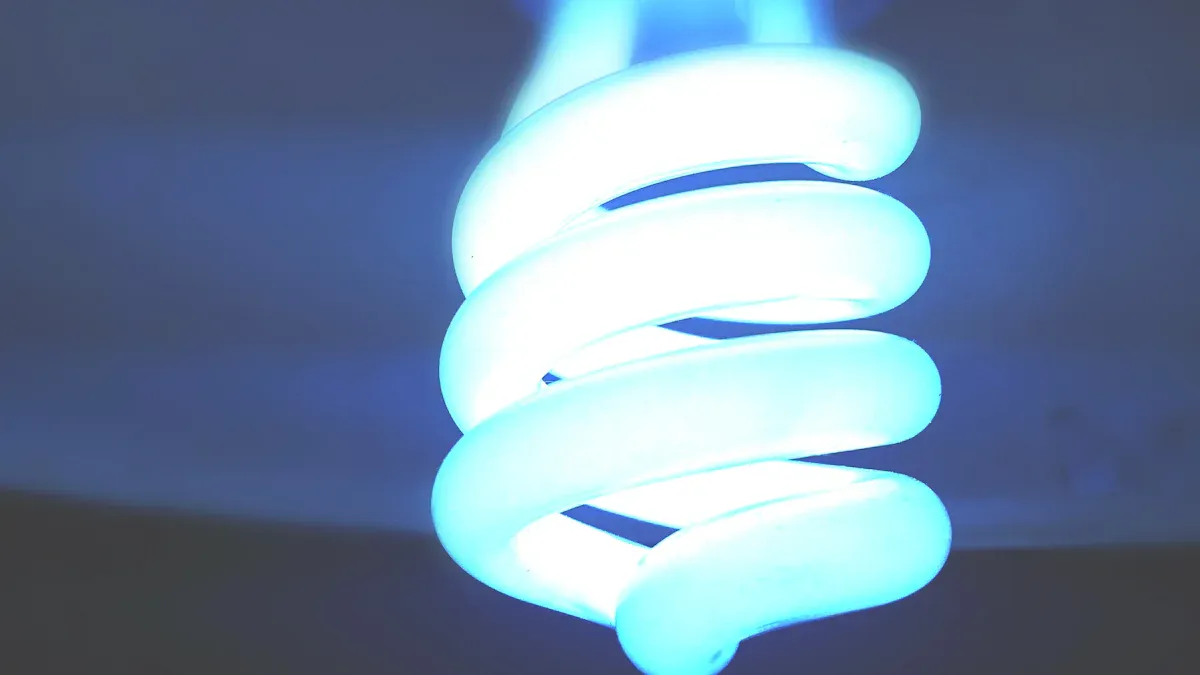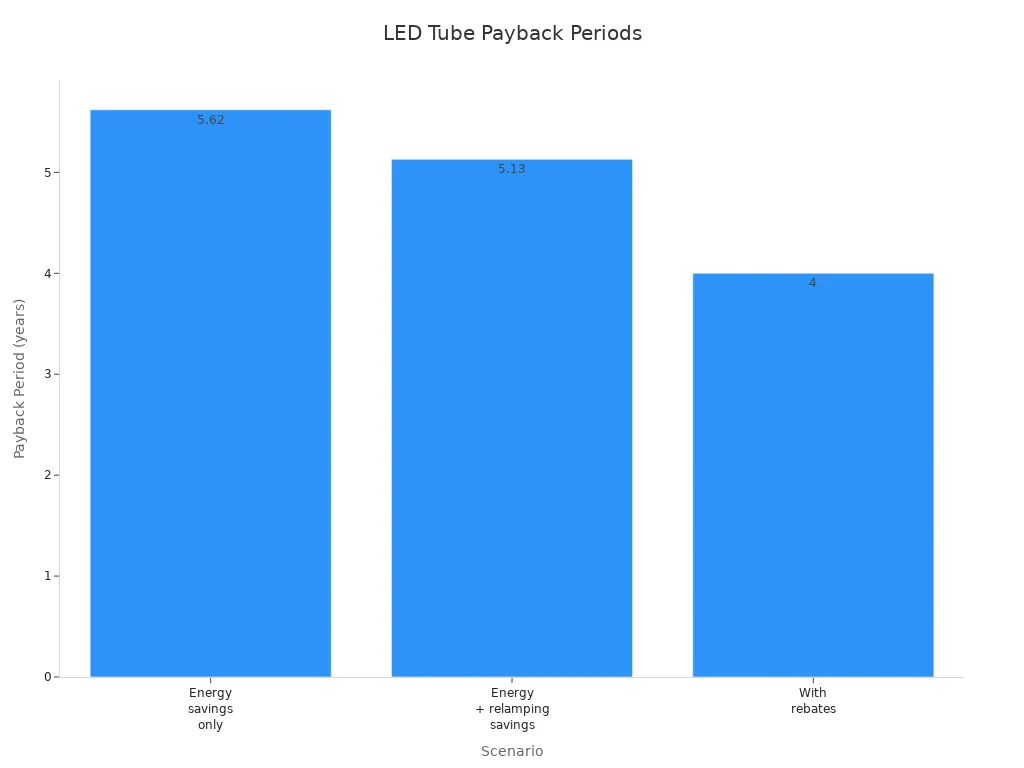Replacing Fluorescent Tubes with LED: Benefits, Installation Methods, and Cost Analysis

You might wonder if replacing fluorescent tubes with LED lighting is worth it. The answer is yes. LED lighting uses less energy, so you save on your electricity bill. You also get a much longer lifespan. Most LED tubes last between 50,000 to 100,000 hours, while fluorescent tubes often last only about 10,000 hours. This means fewer changes and less waste. The benefits include better light quality and lower maintenance costs. When you think about your Home or business, consider how upgrading to Led Light can improve comfort and savings. Learn more About Us and our Product to see how you can benefit from switching to LED.
Key Takeaways
Using LED tubes saves energy and cuts your electric bill. LEDs use less power than fluorescent tubes. LED tubes last longer, so you do not change bulbs often. This lowers how much you spend on fixing lights. You can put in LED tubes in many ways. Some ways are easy, like plug-and-play. Other ways need more wiring. Pick the way that matches what you can do and what you need. LED tubes cost more at first. But they save you money later. This is because you use less energy and buy fewer bulbs. Rebates can help you save even more. Always follow safety rules when putting in LED tubes. Make sure your fixtures and ballasts work with the new tubes. This helps you avoid problems.
Is Replacing Fluorescent Tubes Worth It?
Key Benefits Overview
When you think about changing fluorescent tubes to LED lighting, you get many good things. LED lighting gives off better light. The Color Rendering Index (CRI) is high, so colors look bright and real. You can pick different color temperatures to fit your room. The light from LEDs does not flicker and stays steady.
You use less electricity with LEDs, so you save energy every day.
LEDs last a long time, sometimes more than 50,000 hours, so you do not need to change them often.
You do not have to worry about mercury, which is in fluorescent tubes but not in LEDs.
LEDs turn on right away and are bright as soon as you flip the switch.
Some LED lights can work with smart controls, so you can change how bright they are or set timers to save even more.
💡 Tip: If you switch to LED, you will spend less money on fixing lights and throw away fewer bulbs.
LED tubes are tough. They can handle bumps, shaking, and hot or cold weather. This means you do not have to fix or replace them as much. When you add up all these good things, it is easy to see why experts say to switch to LED.
Who Should Switch
You might ask if changing to LED is a good idea for you. Many places and people can get the most from this change.
Big buildings like warehouses, gyms, and factories need lots of light, so they get the biggest benefits.
Offices, stores, restaurants, and bars also get better light and save money on energy.
If your lights stay on for a long time, you will see lower bills and will not have to change bulbs as much.
You can put LED tubes in place of fluorescent tubes without changing your light fixtures.
LED lighting is a smart choice for many places. You get better light, pay less, and your space is safer. Even if you have a small business or want to make your home nicer, switching to LED can help. You can use LED lighting for regular light, for working, or to make things stand out. You get to control your lights and save money.
LED Lighting vs Fluorescent Tubes

Energy Savings
Switching to LED lighting helps you use less energy. LED lighting uses up to 44% less power than fluorescent tubes. You get the same amount of light but use less electricity. For example, a fluorescent tube uses about 14 watts. An LED tube only uses 8 watts. Fluorescent tubes waste a lot of energy as heat. LED lighting stays cooler and saves more energy. This also means you spend less money cooling your room.
Feature | Fluorescent Tubes | LED Lighting |
|---|---|---|
Energy Efficiency | Up to 44% less efficient | Up to 44% more efficient |
Power Consumption | 14 watts | 8 watts |
Heat Emission | 30-80% lost as heat | 10-20% lost as heat |
Ballast Requirement | Yes | No |
Impact on HVAC Loads | Higher | Lower |
LED lighting can help you save up to 80% on your electric bill. Using less energy is good for your wallet and the planet.
Lifespan and Maintenance
LED lighting lasts much longer than fluorescent tubes. Most LED tubes work for over 50,000 hours. Fluorescent tubes last about 10,000 hours. You do not need to change LED tubes as often. This saves you time and money. In five years, keeping 100 fluorescent tubes working can cost $9,500. Using LED tubes for the same time costs only $1,200. You do not have to fix ballasts with LED, so maintenance is easier and cheaper.
🛠️ Tip: Changing bulbs less often means less work and lower costs.
Light Quality
LED lighting shows colors better. You see colors clearly and they look real. This matters in offices, stores, and homes. LED tubes turn on right away and do not flicker. You get steady light as soon as you flip the switch. You can pick different color temperatures to fit your needs. With LED, you get better color and a more comfortable space.
Environmental Impact
LED lighting is better for the environment than fluorescent tubes. LED tubes do not have mercury, so they are safer for people and nature. You throw away fewer bulbs because LED lasts longer. Using less energy helps lower greenhouse gas emissions. LED lighting is a smart choice for a cleaner world. Less heat from LED also means you need less air conditioning, which helps the environment even more.
🌱 Note: Picking LED lighting helps make the future safer and greener.
Installation Methods for Fluorescent to LED

When you want to change from fluorescent to LED, you have a few ways to do it. Each way has different steps, good points, and hard parts. Pick the way that fits your skills and what you need for your lights.
Installation Method | Description | Pros | Cons |
|---|---|---|---|
Plug-and-Play (Type A) | You keep the old ballast and just put in an LED tube. | Fast and simple; no need to change wires; good for DIY. | Ballast might break; saves less energy; not all ballasts work. |
Ballast-Bypass (Type B) | You take out the ballast and connect the LED tube right to power. These are called ballast-bypass LED tube lights. | Saves more energy; fewer things can break; lasts longer. | Needs new wiring; takes more time; best for people who know about electricity. |
Fixture Replacement (Type C) | You swap the whole old fixture for a new LED fixture or use an outside driver. | Best at saving energy; looks new; has smart controls. | Costs the most; hardest to put in; usually needs an expert. |
Plug-and-Play Tubes
Plug-and-play tubes make it easy to switch from fluorescent to LED. You just take out the old tube and put in the new LED tube. This is good if you want to finish fast. You do not need to touch any wires or remove the ballast. Many people pick this for a quick project at home. Always turn off the power before you start. Some ballasts do not work with every LED tube, so check the box or the maker’s guide.
⚡ Tip: Plug-and-play tubes are the simplest way to change to LED if you do not want to mess with wires.
Ballast-Bypass (Direct Wire)
Ballast-bypass LED tube lights help you save more energy. You take out the old ballast and hook the LED tube right to the power. This way takes longer and you need to know about wiring. The system works better because there is no ballast to break. Ballast-bypass LED tube lights are good if you want fewer fixes and lower bills. If you do not know how to wire, ask someone who does.
🛠️ Note: Ballast-bypass LED tube lights are harder than plug-and-play, but they save more money over time.
Fixture Replacement
Fixture replacement means you take out the whole old light and put in a new LED fixture. This way gives you the best results and more ways to control your lights. You can use dimming and smart features. This job is harder and costs more money. Most people get an electrician to do it.
Plug-and-play tubes are best if you want to do it yourself.
Ballast-bypass and fixture replacement often need a pro.
Always be safe and turn off the power before you start.
How to Convert Fluorescent Lights to LED
Tools and Materials
Before you start the conversion process, gather all the tools and materials you need. This helps you finish the job quickly and safely. Here is a list to guide you:
LED tubes (make sure they match your fixture)
Screwdriver (flathead and Phillips)
Wire cutters and strippers
Voltage tester
Wire nuts or connectors
Ladder (if your lights are high)
Safety gloves and glasses
🧰 Tip: Always check the packaging for any special tools needed for your specific LED installation.
Safety Steps
Safety comes first when you convert fluorescent lights to led. You work with electricity, so you must protect yourself.
Turn off the power at the breaker box.
Use a voltage tester to make sure the power is off.
Wear safety gloves and glasses to protect your hands and eyes.
Let the old fluorescent tubes cool before you touch them.
Keep your work area dry and clear of clutter.
⚠️ Note: If you feel unsure about any step, call a licensed electrician for help.
Step-by-Step Guide
Follow these steps to convert fluorescent lights to led. This guide works for most ballast-bypass installations.
Remove the old fluorescent tube from the fixture.
Take off the cover to reach the wiring and ballast.
Disconnect the ballast from the wires. You can remove the ballast if you want.
Strip about half an inch of insulation from the wires.
Connect the wires as shown in the LED tube instructions. Use wire nuts to secure them.
Place the new LED tube into the fixture.
Put the cover back on the fixture.
Turn the power back on and test your new LED light.
💡 Tip: Read the instructions that come with your LED tubes. Some models may need a different installation method.
You now have a brighter, safer, and more energy-efficient space. The conversion process is simple if you follow each step and stay safe.
Cost Analysis of Replacing Fluorescent Tubes
Upfront Costs
When you look at the price, LED tubes cost more at first. One LED tube usually costs between $10 and $20. A fluorescent tube is cheaper, costing about $2 to $5. If you want to change 10 fixtures, you might pay $150 for LED tubes. For the same number of fluorescent tubes, you would only spend $30.
Item | LED Tube Cost (per tube) | Fluorescent Tube Cost (per tube) |
|---|---|---|
Price Range | $10 - $20 | $2 - $5 |
Example: 10 Fixtures | $150 total | $30 total |
You pay more money at the start for LED tubes. This higher price might make you think twice. But it is important to look at the whole picture. Over time, the extra money you spend at first helps you save later.
💡 Tip: Even though LED tubes cost more at first, you will not have to replace them as often.
Long-Term Savings
LED tubes use less energy than fluorescent tubes. This means your energy bills will be lower every month. LED tubes also last much longer. Most LED tubes work for 50,000 hours or more. Fluorescent tubes usually last only 10,000 to 20,000 hours. You will not need to buy new tubes or pay for someone to change them as often.
Here is a real example. A university changed 300 fluorescent fixtures to LED tubes. Each old fixture used 128 watts. The new LED fixtures used only 53 watts. The lights were on for 12 hours a day, 250 days each year. The university got their money back in about 5.6 years from energy savings alone. When they added savings from less maintenance, they got their money back in just over 5 years. If they used rebates, they could get their money back in less than 4 years.

Choosing LED tubes saves money in the long run. You spend less on energy and fixing lights. Even though you pay more at first, you save more over time. You also get better lighting.
🏆 Note: Most people get all their money back in 4 to 6 years. After that, you keep saving money every year.
Rebates and Incentives
You can pay less at the start by using rebates and incentives. Many utility companies and state programs give you money back when you switch to LED lighting. The kind of rebate and how much you get depends on where you live.
Region/State | Utility/Program Name | Contact Information | Notes on Rebates and Incentives |
|---|---|---|---|
Northeast | Various utilities (e.g., PECO Energy Co, National Grid) | Phone numbers provided | Rebates often need paperwork and pre-approval but can save you a lot on LED upgrades. |
Midwest & Northwest | Multiple utilities (e.g., Northwestern Energy, Xcel Energy) | Contact numbers listed | Easier approval with many rebate choices; pick your product first, then match it to a rebate program. |
California | Pacific Gas & Electric (PG&E) | 800-743-5000 | Uses rules (Title 20, Title 24) instead of direct rebates to get people to use LED. |
Texas | Austin Energy | 512-494-9400 | Good rebates, but the process can be long and hard. |
Florida | Florida Power & Light (FPL) | 800-226-3545 | Very few and small rebates are available. |
Other States | Various utilities (e.g., Alabama Power, Efficiency Vermont, TVA Energy Right) | Contact info provided | Rebates are different in each state; some give instant, some give money back later, and some make special deals for LED upgrades. |
There are three main types of rebates:
Point of Sale: You get a discount right away when you buy LED tubes.
Prescriptive: You get money back later, based on the kind of fixture you use.
Custom: You work with the utility to make a special rebate for your project.
You can look up the Database for State Incentives for Renewables and Efficiency (DSIRE) to find programs near you. Rebates help you get your money back faster and make LED upgrades cheaper.
📞 Tip: Always ask your local utility about rebates before you buy. You could save a lot of money on your project.
Compatibility and Common Issues
Fixture and Ballast Types
When you switch from fluorescent tubes to LED, you need to check the compatibility of your fixtures and ballasts. Not all fixtures work with every LED tube. Some LED tubes, called ballast-compatible led tube lights, fit right into your old fixture without extra wiring. These tubes work with many common electronic and instant-start ballasts. You can find a list of compatible ballasts from the tube manufacturer.
Other LED tubes need you to remove the ballast. These are called direct-wire or ballast-bypass tubes. If you use ballast-compatible led tube lights, always check the label on your fixture and the tube box. This helps you avoid problems and makes sure you get the best performance.
📝 Tip: Always match your LED tube type with your fixture and ballast for the best compatibility.
Troubleshooting
Sometimes, LED tubes do not work after you install them. You can solve most problems by checking a few things. Here are the most common issues and how you can fix them:
Wiring Issues: Make sure you wired the fixture correctly. Check the LED tube instructions and confirm the live and neutral wires are in the right place. For direct-wire tubes, the ballast must be bypassed.
Ballast Compatibility: If you use Type A tubes, check if your ballast is on the manufacturer's compatibility list. If not, the tube may flicker or not turn on. You can switch to a direct-wire tube if needed.
Faulty Power Supply: Test the power with a voltage tester. Look for loose wires, blown fuses, or tripped breakers.
Overheating: Make sure your fixture has good airflow. LED drivers can fail if they get too hot.
Poor Quality LED Tubes: Low-quality tubes may stop working early. Choose tubes from trusted brands.
Age and Wear: If your LED tube dims or fails after years of use, it may be time to replace it.
Environmental Factors: Dust, moisture, or extreme temperatures can cause problems. Use tubes with the right IP rating for your space.
⚡ Note: If you feel unsure about wiring or power issues, call a licensed electrician for help.
Drawbacks of LED Tube Upgrades
Light Distribution
When you switch from fluorescent tubes to LED tubes, you may notice changes in how the light spreads across your space. Fluorescent tubes shine light in all directions, so they fill a room evenly. LED tubes often focus light in one direction. This can make some areas brighter and leave others dimmer. If you have fixtures with reflectors, you might not see much difference. In open fixtures, you may see shadows or uneven lighting.
You should check your room after installing LED tubes. Walk around and look for dark spots or glare. If you see uneven lighting, you can try using LED tubes with a wider beam angle. Some LED tubes offer frosted covers to help spread the light more evenly. You may need to adjust the placement of your fixtures or add more tubes to get the best results.
💡 Tip: Test one or two LED tubes before replacing all your lights. This helps you see how the light will look in your space.
Reliability Concerns
LED tubes promise long life, but real-world results can vary. You may face some reliability issues if you do not choose carefully or install them correctly. Here are some common concerns:
Manufacturers often base LED tube life ratings on chip testing standards, not full lamp testing. Actual lifespan may differ.
Driver failures cause many early LED tube failures. Low-quality drivers and poor testing increase this risk.
Type A LED tubes that use old ballasts can have compatibility problems. If the ballast fails, you must replace it.
Many brands skip important stress tests like heat, humidity, or thermal shock. This can lead to early breakdowns.
Warranties may not protect you if the company closes or does not honor claims.
Installation mistakes, such as putting tubes in upside down, can lower performance and shorten life.
Quality varies a lot between brands. Some tubes last much longer than others.
You should always buy LED tubes from trusted brands. Read reviews and check for certifications. Careful selection and proper installation help you avoid most problems.
⚠️ Note: Take time to research before you buy. Good planning helps you get the most from your LED upgrade.
Switching to LED tubes helps you use less energy and get better light. LED tubes last longer than other tubes. You will not need to change them as often. This saves you money on repairs and new tubes. When you are ready to choose, remember these things:
Make sure your fixtures and ballasts work with the LED tubes you pick.
Think about how much the tubes and installation will cost. You might need an electrician.
Think about how much it costs to keep up your lights and how often you will need new tubes.
Safety is important. If the wiring is hard, you may need a pro.
Look for rebates to help you pay less at the start.
Lighting experts say you should always turn off the power first. Follow the steps in the instructions. If you are not sure, ask a pro for help. Planning ahead helps you save money and get the best lights for your room.
FAQ
Can you use LED tubes in any fluorescent fixture?
You can use LED tubes in most fluorescent fixtures. Always check if your fixture and ballast match the LED tube type. Some tubes need you to remove the ballast. Read the instructions before you start.
Do LED tubes need a special ballast?
Most LED tubes do not need a special ballast. Plug-and-play tubes work with many ballasts. Ballast-bypass tubes need you to remove the ballast. Always check the tube’s label for details.
Will LED tubes save you money right away?
You start saving money as soon as you switch to LED tubes. Your energy bill drops because LEDs use less power. You also spend less on new tubes and repairs over time.
Are LED tubes safe to install yourself?
You can install plug-and-play LED tubes yourself. For ballast-bypass or fixture replacement, you should know about wiring. If you feel unsure, ask a licensed electrician for help.
What color temperature should you choose for LED tubes?
Pick a color temperature that fits your space:
3000K: Warm, good for homes
4000K: Neutral, good for offices
5000K+: Cool, good for work areas
📝 Tip: Test different colors to see what looks best in your room.
See Also
Complete Guide To Switching From Fluorescent Tubes To LEDs
Exploring LED Replacement Lights: Varieties, Advantages, And Setup
Modern LED Street Bulbs: Efficiency, Durability, And Installation Perks
Comparing LED Streetlights And Traditional Lights On Efficiency And Cost

